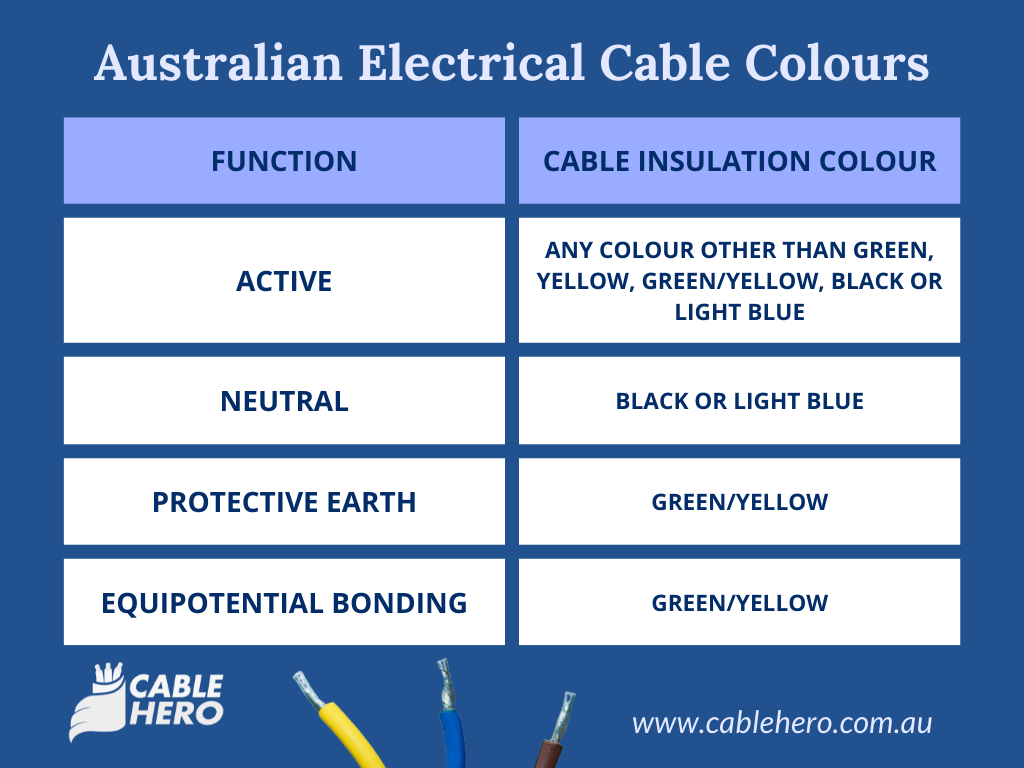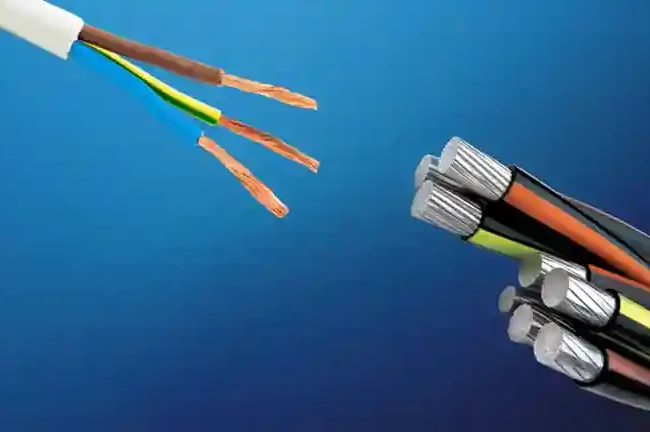
Australian Electrical Cable Colour Guide
For successful cabling installations, we recommend electricians use CableHero, our precise cable size calculator.
In addition, for improved electrical safety, you’ll need this convenient reference to Australian electrical cabling colour codes we’ve prepared just for you.
There’s an Australian standard that you can follow through a system of electrical cable colour codes.
It was first standardised back in 1894.
Colour codes were established to help people know the types of electrical wires found in cables.
As professionals whose work involves electrical installations in Australia, it’s a must to have a deep understanding on the electrical cabling colour codes for AC/DC wires and single phase and 3-phase systems.
So, let this CableHero colour code guide help you know how to best work with cabling and wiring properly.
Why is electrical cable colour coding important?
Aside from using a cable size calculator online, it is critical for electricians to reduce any electrical fire risks for homeowners when they’re using electricity at home.
Australian wire colour codes help you reduce fire risks.
In the unlikely event of an electrical fault, it is easier electricians to evaluate and work on it at a glance when all the wires are colour coded.
This colour code helps electricians to quickly identify the type of wires installed and their function.
Do wire colour codes change in Australia?
Electrical wiring colour codes do change with time.
On top of that, it may not be the same for every electrical system in Australia.
You must investigate and make enquiries regarding existing wirings that affect your project.
Simply remember that earlier systems will possibly have a different colour code.
Any personnel working with you on the wires should have some familiarity with the colour codes from the determined period of installation.
You can refer to the colour guide towards the end of this article specifically for systems before the creation of AS3000 in 2018.
Australian Electrical Cable Colour Guide
Let’s understand the colour codes and how they differentiate electrical current carrying power, signal, and grounding wires.

Here below is a list of different electrical wire colours in Australia including their meanings.
Red = Live Wire or L2
Red is commonly a live wire for twisted pair, single-fibre, and four-fibre conductors.
Orange = Live Wire or L1
Orange is also for live conductors that carry a voltage when connected to a socket but not when grounded.
White = Signal Wires or General Wires
Signal wires connect a point to the main grid.
It should be in a colour that both his workers and the homeowners will see.
Blue = Earth Return (ER), Earth Line (EL)
Green = Ground Wires
The ground wire is green or yellow.
Sometimes, it’s with wires connected in parallel with another neutral wire.
Brown = Protective Earthing (PE)
Black = Neutral Wires
For underground installations, neutral and earth wire are generally in a grounded style. So, brown or black are usually used.
AS3000 Wire Colour Code
Single phase cabling colours are:
- Active = Brown
- Neutral = Blue
- Earth = Green & Yellow
3-phase wiring colours are:
- Phase 1 = Brown
- Phase 2 = Black
- Phase 3 = White or Grey
- Neutral = Blue
- Earth = Green & Yellow
Pre-2018 Wire Colour Code
Older single phase wiring colours are likely:
- Active = Red
- Neutral = Black
- Earth = Green
Previously common 3-phase wiring features:
- Phase 1 = Red
- Phase 2 = White
- Phase 3 = Blue
- Neutral = Black
- Earth = Green
For cable installations done before 2000’s, other colour combinations are possible.
It can differ from what is stated here.
The age of the commercial property or home might not be the best indicator if previous work involved home rewiring, or unlicensed electrical repairs.
So, make sure you conduct a thorough inspection and evaluation before rewiring or installing a new electrical system.
What are some requirements and exceptions for conductor identification?
Previously Installed Earthing and Bonding Conductors
According to AS3000, when electrical wiring changes or fixes are made and produce terminations or junctions to existing bare conductors, the said conductors must be sleeved with green/yellow sleeving within each produced terminations or wiring junctions.
Pre-existing Live Conductors
When electrical wiring changes or fixes are made and produce terminations or junctions to existing live conductors with yellow insulation, the said conductors must be sleeved with white sleeving within each produced terminations or wiring junctions.
Protective Earthing and Equipotential Conductors
Based on the Australian Standard, this type of conductor doesn’t need to green/yellow in colour if:
- An aerial or bare conductor is utilised as a protective earthing conductor.
- A suitable screen of multi-core cabling is utilised as a protective earthing conductor that will acceptably be identified as an earthing conductor.
- An insulated protective earthing conductor is not manufactured in the green/yellow colour.
- A multi-core cable has a green earth and must be sleeved at terminations where it’s not clear that it’s being utilised for earthing purposes.
Active and Neutral Conductors
As mentioned by the Standard, this type of conductor doesn’t need to follow the colours on Table 1 if:
- The conductors within a multi-core cable that are not yellow are identifiable by numbering or lettering.
- The flexible cord and cable conductors that are not yellow are identifiable. Acceptable alternative colours are in the Standard.
- The neutral conductor of an aerial conductor is determined by several longitudinal ribs surrounding the circumference and length that visibly identifies it from other conductors.
CableHero: Cable Size Calculator
Once you’ve got the colour code and wiring type combinations sorted, make sure you use the right cable size.
For accurate results, use CableHero, the latest cable size calculator online.
Register for a FREE trial today!
Disclaimer: Although CableHero provides important and accurate tips and information through this website, CableHero does not make any representations or warranties as to the completeness, precision, trustworthiness, or timeliness of such information, and CableHero does not claim any duty to be held liable from the usage of the information.





Fibresales
Your blog is very helpful to us. Thank you for the amazing blog.